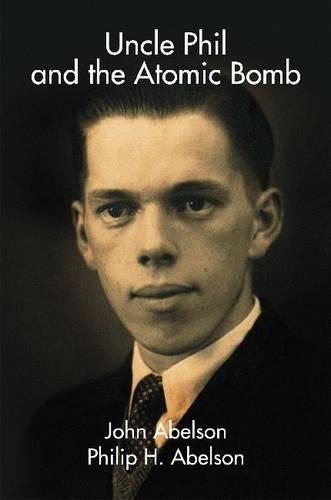
Uncle Phil and the Atomic Bomb
(Hardback)
Publishing Details
Uncle Phil and the Atomic Bomb
By (Author) John Abelson
By (author) Philip H Abelson
Macmillan Learning
Roberts & Company Publishers
3rd November 2007
United States
Classifications
General
623.45119092
Physical Properties
Hardback
152
Description
The history of the Manhattan project and its successful creation of the atomic bomb during World War II has been well documented. It is not well known, however, that a separate and crucial part of this project was carried out by the U.S. Navy at its Naval Research Laboratory in Washington DC. This project, led by the young physicist, Philip Abelson, devised a novel liquid thermal diffusion process for separating the fissionable 235U from 238U. Eventually this process was employed at Oak Ridge and significantly contributed to the construction of the uranium bomb that was dropped on Hiroshima. In Uncle Phil and the Atomic Bomb, John Abelson chronicles the life of his Uncle, the son of Norwegian immigrants, as he grows up in Tacoma, Washington, studies chemistry and physics at Washington State University and joins Ernest Lawrence as a graduate student at the University of California, Berkeley. The book then covers the war years and beyond as Philip Abelson and his Navy colleagues work on the bomb effort and then turn their attention to the design of the first atomic submarine. Most of the biography is from an unpublished autobiographical sketch written by Philip Abelson 20 years ago. Throughout the book, John Abelson stitches the story together with his own insights into his uncle's life, as well as providing the historical back-drop of what was happening at the time. This is a riveting, untold story of a determined, brilliant, and highly creative scientist working against the odds at a crucial time in American history.
Reviews
"This account of the life of Philip Abelson by his nephew, John, is thoroughly charming. It is full of the kind of details that make it read like a fine novel. I would recommend it to anyone." David L. Goodstein, Frank J. Gilloon Distinguished Teaching and Service Professor, California Institute of Technology, and the author of Out of Gas: The End of the Age of Oil
Author Bio
John Abelson is George Beadle Professor of Biology Emeritus at the California Institute of Technology. Dr. Abelson is one of the major figures in the area of gene expression. His work has made possible an understanding of how the products of genes, RNA precursors, are matured to give their functional products. He is also the President and Executive Director of the Agouron Institute, a charitable research organization that supports new research frontiers and technologies in biology and geology.
The late Philip H. Abelson (1913-2004) was born in Tacoma, Washington. He attended Washington State University, where he received degrees in chemistry and physics, and the University of California, Berkeley, where he earned his Ph.D. in nuclear physics. As a young physicist, he worked for Ernest Lawrence at the University of California, Berkeley. He was among the first American scientists to verify nuclear fission in an article submitted to the Physical Review in February of 1939. In addition, he collaborated with Nobel Prize winner Luis Alvarez in early nuclear research, and was the co-discoverer of the element neptunium on June 8, 1940 (with Edwin McMillan, who was awarded the Nobel Prize for the discovery). He was a key contributor to the Manhattan Project during World War II. Although Abelson was not formally associated with the atom bomb project, the liquid thermal diffusion isotope separation technique that he invented proved a critical step in creating sufficient fuel for the weapon. After the war, he turned his attention to applying nuclear power to submarines. Under Admiral Hyman Rickover's leadership, Abelsons concept became reality with the launching of USS Nautilus, the world's first nuclear-powered submarine. From 1951 until 1971 he served as the director of the Carnegie Institution of Washington's Geophysical Laboratory, and served as president of the Institution from 1971 to 1978. From 1962 to 1984 he was editor of Science magazine, and served as its acting Executive Officer in 1974, 1975, and 1984. From 1972 until 1974 he served as President of the American Geophysical Union. Dr. Abelson received many distinguished awards, including The President's National Medal of Science, the National Science Foundation's Distinguished Achievement Award, the American Medical Association's Scientific Achievement Award, the Distinguished Civilian Service Medal, and the Waldo E. Smith Medal in 1988. In 1992 he was awarded the Public Welfare Medal, the National Academy of Science's highest honor.
